Notes
Question by Topic
Notes
This page contains the detailed and easy notes for GCSE Edexcel Genetic Biology for revision and understanding Genetic.
Banner 1GCSE Edexcel Biology Genetic Complete Revision Summary
Genetic
Banner 2Genetic
- Sexual and Asexual Reproduction
- Meiosis
- DNA
- Mutation
- Inheritance
- Genetic Diseases
- Sex Determination
- Variation
- Evolution
- Selective Breeding
- Genetic Engineering
- Speciation
- Theories of Evolution
- Speciation
REPRODUCTION – Making more offspring’s
Reproduction is a process in which organisms produce young–ones of the same species. It is one of the fundamental characteristics of living organisms.SEXUAL
 |
ASEXUAL
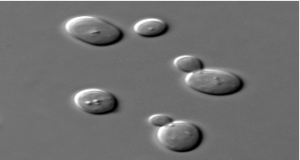 |
| Involves meiosis | Involves mitosis |
| Require both parents and involve fusion of gametes | Require single parent and no fusion of gametes |
| The offsprings are not genetically identical. | The offspring are clone and genetically identical. |
| Produce Variation and lead to evolution | No Variation and Evolution |
| eg human reproduction | eq budding in yeast, cutting, runners in plants |
MEIOSIS
Meiosis is the division of a germ cell that involves two fissions of the nucleus and gives rise to four gametes, or sex cells, each with half the number of chromosomes of the original cell.- a) It takes place in the sex cells
- b) It is involved in the production of gametes
- c) One parent cell divide to form four daughter cells
- d) Daughter cells are not genetically identical to the parent.
- e) Daughter Cells have half the number of chromosome than the parent.
- f) It produces Variation as it results in crossing over and it leads to evolution.
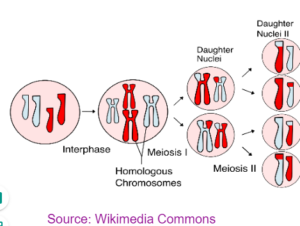
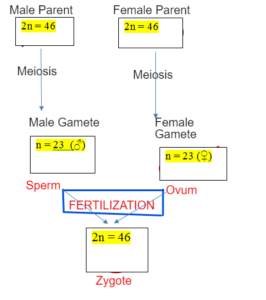
REPRODUCTIVE CYCLE IN FUNGI
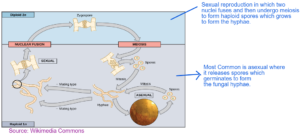
REPRODUCTIVE CYCLE IN PLANTS
Sexual reproduction involves the fusion of pollen grain with the egg nuclei forming zygote which forms the seeds and germinate to form a new plant.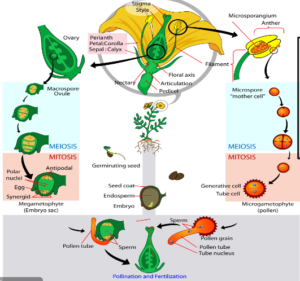
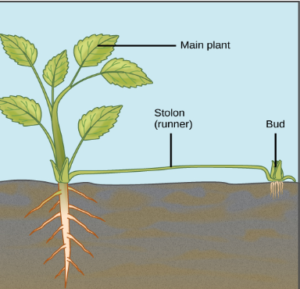 Sexual reproduction in plants in the form of runner, stolon or tuber which produces genetically identical plants.
Sexual reproduction in plants in the form of runner, stolon or tuber which produces genetically identical plants.
REPRODUCTIVE CYCLE IN MALARIA
Liver Cell- Asexual reproduction to form lot of malarial parasite spores
- Formation of male and the female gamete of the parasite.
- Sexual reproduction in the mosquito forming zygotes and it divides to form spores of pathogens which enters saliva and then is injected into healthy person.
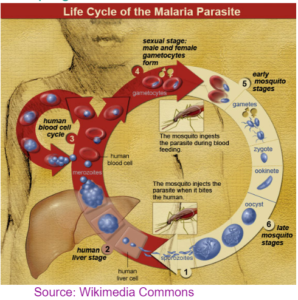
Genetics (1)
Restricted download
×
DNA – Deoxyribonucleic acid
Deoxyribonucleic acid (DNA) is a large macromolecule made up of a large number of monomeric units of nucleotides. Each nucleotide is composed of nucleoside and a phosphate group
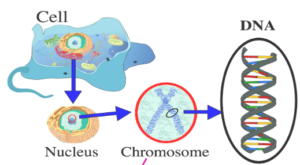 Chromosome – These are the structure that holds our genetic information
DNA – Double Helical Structure which contains genetic information
Gene – It is the segment of DNA that code for protein
Chromosome – These are the structure that holds our genetic information
DNA – Double Helical Structure which contains genetic information
Gene – It is the segment of DNA that code for protein
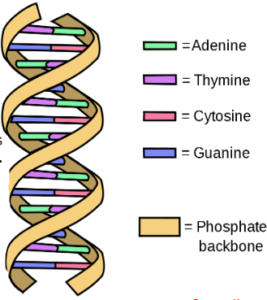 DN
DNA : A POLYNUCLEOTIDE
DN
DNA : A POLYNUCLEOTIDE
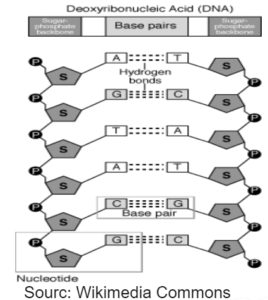
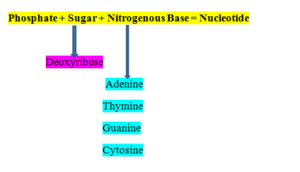
HUMAN GENOME
- Genome is the complete genetic materials of the organism.
- International collaboration to sequence around three billion bases and more than 20,000 genes.
Importance of Human Genome Project
- a) Understanding of genetic Diseases and inherited disorders
- b) Better personalised medicines
- c) Understanding Evolution
- d) Indentifying new drugs target.
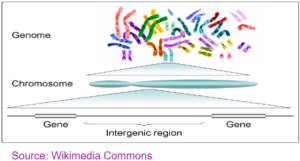
PROTEIN SYNTHESIS
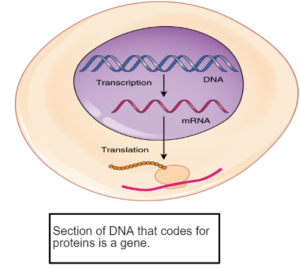
- The DNA copies the code and form mRNA by the process of transcription.
- The mRNA leaves the nucleus and reaches the ribosome.
- The ribosomes reads the bases in the sequence of three bases. The t-RNA brings the corresponding amino acid and forms polypeptide chain .
- The polypeptide chain than forms proteins.
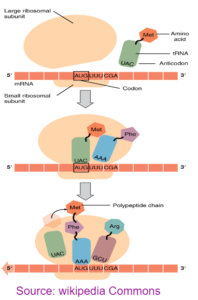
Mutations
- Can be silent, harmful or beneficial
A change in sequence of a gene or DNA
Results in the change in the sequence of the mRNA
Result in the change in amino acid
Result in the formation of non-functional protein or enzyme.
Change the structure of protein, the active site substrate can no longer fit into it
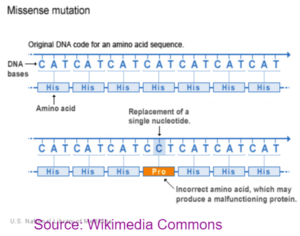 Banner 3
Banner 3
GENETIC TERMS
Chromosome – These are the structure that holds our genetic information
DNA – Double Helical Structure which contains genetic information
Gene – It is the segment of DNA that code for protein
Allele – the alternative factors located at the same locus on homologous chromosomes are called alleles.
Dominant Allele – It is able to express itself even in the presence of its recessive allele.
Recessive Allele – Unable to express its effect in the presence of dominant allele.
Homozygous – individual which contains identical genes or factors of a character on its homozygous chromosomes. E.g TT or tt
Heterozygous – individual which contains the two different or contrasting factors, genes or alleles of a character on its homologous chromosomes. e.g Tt
Genotype – It is the gene complement or genetic constitution of an individual with regard to one or more characters irrespective of whether the genes are expressed or not.
Phenotype – It is the external manifestation of gene products brought to expression
Punnett Square – It is a checker board used to show the result of a cross between two organisms.
Banner 4
Genetic Cross
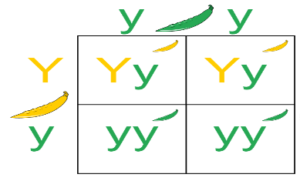 Heterozygous yellow plant with green plant.
Dominant: yellow Y
Recessive –green y
Heterozygous yellow plant with green plant.
Dominant: yellow Y
Recessive –green y
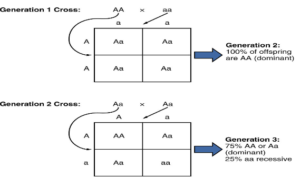
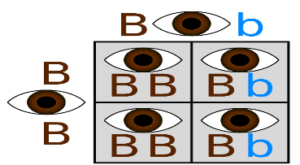 Heterozygous brown eyes with homozygous brown eyes.
B: Brown =Dominant
b: Blue: =Recessive
Heterozygous brown eyes with homozygous brown eyes.
B: Brown =Dominant
b: Blue: =Recessive
SEX DETERMINATION
Females XX
Male XY
50% changes of the offspring to be male or female
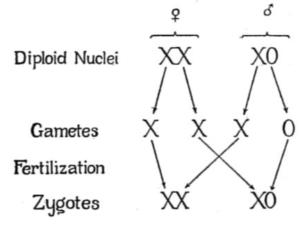 Banner 5
Banner 5
POLYDACTYLY
- Caused by dominant Allele
- If one of the parent has the allele offspring will have a disease.
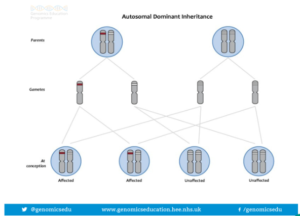
GENETIC DISORDER
- Caused by recessive allele
- Both the parent should have the allele to infect the offspring.
- The mucous becomes sticky and thick.
- It blocks the airways, reproductive tract and digestive tract.
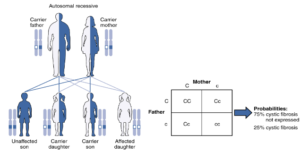 Baneer 6
Baneer 6
GENETIC SCREENING
- Provides genetic counselling to the couple and helps to diagnose any problem before birth.
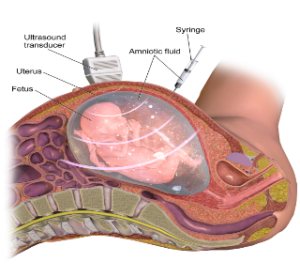
Amniocentesis
- Done at later stages Taking amniotic fluid which has fetal cells .
- The cells are then screened for genetic disorders.
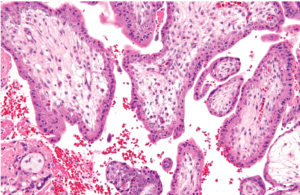
- Chorionic Villi Sampling
- Done at early stage and involve taking fluid from the placenta which contains fetal cells.
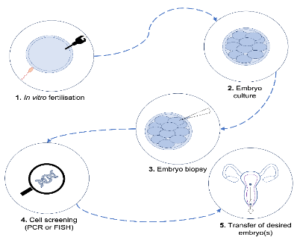 Banner 7
Banner 7
IVF Screening
Involves screening of the embryo after in vitro fertilization.
VARIATION – Differences amongst the individual
CONTINIOUS VARIATION
DISCONTINOUS VARIATION
It is environmental like height, weight.
It is genetic like blood group.
Graph is a bell shaped curve
Graph is like column graph having descrete values.
Natural Selection
“Natural selection is the differential survival and reproduction of individuals due to differences in phenotype. It is a key mechanism of evolution, the change in the heritable traits characteristic of a population over generations.”- Wikipedia
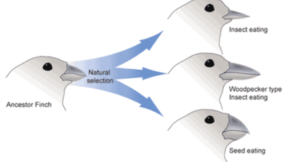
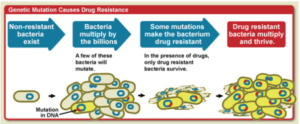
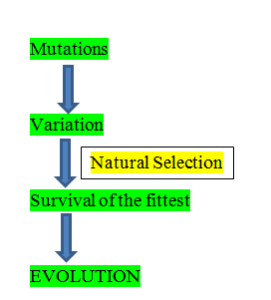
SELECTIVE BREDDING
- Artificially mating the two desirable characters parents to produce required offspring and selecting the ones with the best characteristics.
Applications
- a) Producing high milk yielding cow
- b) Producing diseases resistance and high yield crops.
DISADVANTAGES
- a) Slow process
- b) Time consuming
- c) Causes reduction in gene pool
- d) Undesirable traits can also get selected.
- e) A disease can result in elimination of whole population
Banner 8
GENETIC ENGINEERING
- Altering the gene by inserting the desired gene to produce genetically modified organisms.
- Isolation
- Inserting the gene with the vector (plasmid) to form recombinant DNA
- Introducing the recombinant into bacteria – Transformation
- Selecting transformed bacteria
- Growing transformed bacteria
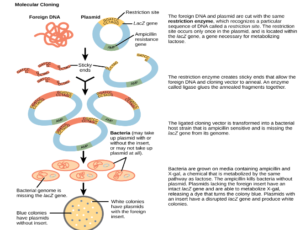
GENETIC ENGINEERING
Examples
- a) Tomato with greater shelf life
- b) Golden Rice which is rich in Vitamin A
- c) Gentically engineered Insulin
- d) Disease resistant crops
- e) Insects resistant crops
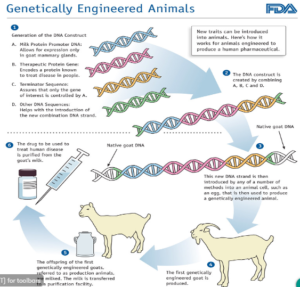
CLONING
- Taking Explant
- Growing and multiplying it in the nutrient medium
- Nutrient medium has all the hormones and minerals
- The new tiny plantelets formed are grown in the field
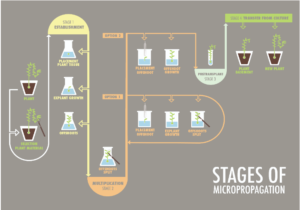
ADULT CELL CLONING
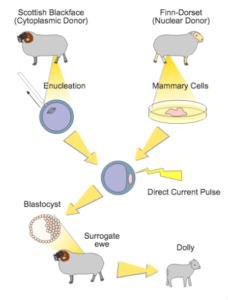 Banner 9
Banner 9
GENETIC ENGINEERING DEBATE
ADVANTAGES
- a) Produce Genetically Engineered crops which are high yielding
- b) Produce nutrient rich crops
- c) Produce high meat and high milk producing cows.
- d) Cure genetic disorders
- e) Can be used to produce medicines
- f) Can be used to produce food through microorganisms.
DISADVATANGES
- a) Reduce genetic diversity and variety
- b) Can result in sterile offspring
- c) Faulty genes or traits can also be transmitted
- d) It is expensive
- e) Ethical and religious concerns of playing with the nature.
- f) It is irreversible
GREGOR MENDEL
Genes Protein Expression
- In the 19th Century
- Father of Genetics
- He studied inheritance pattern in the pea plant
- He said that certain characters are inherited from one generation to another.
- In the 20th Century, the structure of DNA and the genes were discovered to build on Mendel Ideas
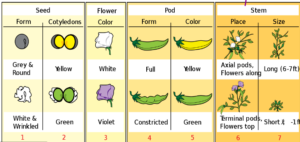
LAMARCK THEORY
Theory of Use and Disuse- If any characters in used it will develop and will be inherited others will be lost.
Example
- a) Giraffe had short necks and use to eat the grass
- b) As all grass were eaten away the giraffe stretched its neck to reach trees.
- c) The necks was used more and developed long necks
- d) The giraffe now acquired long necks.
Not all characters are inherited. Like Einstein did not give birth to an Einstein.
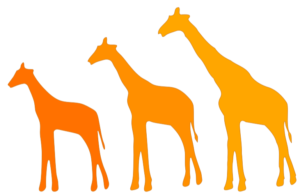
CHARLES DARWIN THEORY OF EVOLUTION
- Each Organism has potential to reproduce more than an environment can sustain
- The population remains constant due to natural selection
- Organisms show variation and nature selects the one which has desired characterstics.
- The one with desired characters survive and reproduce: Survival of the fittest
- The fittest one reproduce and pass the traits to next generation
EVOLUTION
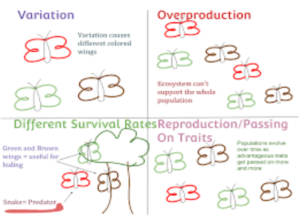
SPECIATION
Formation of new species
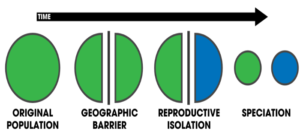
EVIDENCE OF EVOLUTION – FOSSILS
What are Fossils ?
- Fossils are the preserved remains of dead plants and animals that existed millions of years ago.
- Impressions, tracers or foot prints on the rocks are also considered as fossils.
How are Fossils formed ?
- They are formed by incomplete decay of the dead organsims due to hostile conditions for the decomposers.
- The harder part are replaced by minerals and are preserved as rock Impression on mud or rocks
Advantages
- Can give the information about extinct species.
- It can give the information about Evolution.
- Problems with Fossils
- Most of the animals that are soft bodies have no fossils
- Some of the fossils are yet to be discovered.
- No fossil record for some species’
FOSSILS AS EVIDENCE OF EVOLUTION
- Horse fossils record gives us the evidence of evolution
- From five digits it has developed hoofed limb and adapted to run on hard ground
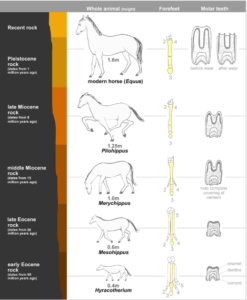
EXTINCTION
It the permanent loss of species
Causes
- a) Environmental Changes
- b) Diseases
- c) Predator
- d) Competition
- e) Catastrophic Event
Banner 10
CLASSIFICATION
Organising the species into groups according to the similar characterstics.
Advantages
- a) Helps to study the organisms easily
- b) Easy to identify unknown species
Basis
- a) Earlier organisms were classified on the basis of obeservable Characteristics
- b) Evolutionary Relationship
- c) DNA or protein sequencing
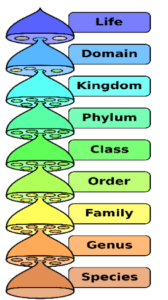
BINOMIAL NOMENCLATURE
- Each species is given two name
- The first name is Genus and is always capital
- The second name is species and it is written in lower case
- The name is italicised and if handwritten is underlined.
Homo sapiens
Genus name species name
- Universally accepted
- Helps the scientists to communicate
THREE DOMAIN CLASSIFICATION
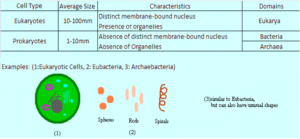 Banner 11
Banner 11
KEY TERMS
Asexual Reproduction – When offspring is produced by a single parent with or without the involvement of gamete formation, the reproduction is called Asexual.
Sexual Reproduction – Development of new individuals through the formation and fusion of male and female gametes.
Mitosis – Mitosis is a process of cell division that results in the development of two genetically identical daughter cells from a single stem cell.
Meiosis – Meiosis is the division of a germ cell that involves two fissions of the nucleus and gives rise to four gametes, or sex cells, each with half the number of chromosomes of the original cell.
Fertilization – Fusion of male and female gamete.
Variation – Variations are the differences found amongst individuals of the same species, race and family.
Natural Selection – Natural selection is the process in which organisms with favorable traits are more likely to reproduce.
Genome – It is a complete set of chromosomes when every gene chromosome is represented singly as in a gamete.
DNA – Double Helical Structure which contains genetic information
Chromosome – These are the structure that holds our genetic information
Allele – the alternative factors located at the same locus on homologous chromosomes are called alleles.
Nucleotide – A nucleotide is an organic molecule that is the constitutive element of DNA and RNA.
Transcription – formation of RNA or ribonucleic acid over DNA template is called transcription.
Translation – It is the process by which linear sequence of nucleotides or codons in a molecule of mRNA directs the specific linear sequence of amino acids in apolypeptide.
Gene Expression – A mechanism by which a gene is able to express itself in the phenotype of an organism.
Mutations – a new sudden inheritable discontinuous variation which is caused by a change in the nucleotide number, type and sequence of a DNA segment representing a gene or cristron.
Homozygous – individual which contains identical genes or factors of a character on its homozygous chromosomes. E.g TT or tt
Heterozygous – individual which contains the two different or contrasting factors, genes or alleles of a character on its homologous chromosomes. e.g Tt
Genotype – It is the gene complement or genetic constitution of an individual with regard to one or more characters irrespective of whether the genes are expressed or not.
Phenotype – It is the external manifestation of gene products brought to expression
Dominant Allele – It is able to express itself even in the presence of its recessive allele.
Recessive Allele – Unable to express its effect in the presence of dominant allele.
Punnett Square – It is a checker board used to show the result of a cross between two organisms.
Sex determination – It is a mechanism which brings about differentiation of sex, i.e, male and female, amongst organisms.
Cystic Fibrosis – Cystic fibrosis is an inherited disorder characterized by the accumulation of thick and sticky mucus that can damage many organs in the body.
Embryo Screening – a single cell is removed from an embryo two or three days after it has been conceived through in vitro fertilization and tested for genetic abnormalities.
Genetic Engineering – Genetic engineering refers to the direct manipulation of DNA to alter the characteristics of an organism (phenotype) in a particular way.
Variation – Variations are the differences found amongst individuals of the same species, race and family.
Evolution – Evolution is the change in the inherited traits of a population from generation to generation.
Natural Selection – Natural selection is the process in which organisms with favorable traits are more likely to reproduce.
Cloning – The term cloning describes several processes that can be used to produce genetically identical copies of a biological entity.
Tissue Culture – the process or technique for growing body tissue in a culture medium outside the body
Genetics – Study of heredity and variation in biological systems is called genetics.
Speciation – formation of new species.
Fossils – A fossil is the hard residue of a plant or a prehistoric animal that is found inside a rock.
Classification – classification is a mode of arranging organisms into categories according to a systematic plan as per nomenclature system.
Domain – Highest taxonomic rank of organisms in the three-domain system of taxonomy
Kingdom – It is the highest category of taxonomic studies.
Banner 12
Disclaimer:
I have tried my level best to cover the maximum of your specification. But this is not the alternative to the textbook. You should cover the specification or the textbook thoroughly. This is the quick revision to help you cover the gist of everything. In case you spot any errors then do let us know and we will rectify it.
References:
BBC Bitesize
Wikipedia
Wikimedia Commons
Image Source:
Wikipedia
Wikimedia
Commons
Flickr
Pixabay.
Question by Topic
Make sure you have watched the above videos and are familiar with the key definations before trying these questions. It is also good to time yourself while doing these questions so that you can work on the speed as well.
Reproduction
Variation And Evolution
Genetics And Evolution
Restricted download
×DNA – Deoxyribonucleic acid
Deoxyribonucleic acid (DNA) is a large macromolecule made up of a large number of monomeric units of nucleotides. Each nucleotide is composed of nucleoside and a phosphate group Chromosome – These are the structure that holds our genetic information
DNA – Double Helical Structure which contains genetic information
Gene – It is the segment of DNA that code for protein
Chromosome – These are the structure that holds our genetic information
DNA – Double Helical Structure which contains genetic information
Gene – It is the segment of DNA that code for protein
 DN
DNA : A POLYNUCLEOTIDE
DN
DNA : A POLYNUCLEOTIDE


HUMAN GENOME
- Genome is the complete genetic materials of the organism.
- International collaboration to sequence around three billion bases and more than 20,000 genes.
Importance of Human Genome Project
- a) Understanding of genetic Diseases and inherited disorders
- b) Better personalised medicines
- c) Understanding Evolution
- d) Indentifying new drugs target.

PROTEIN SYNTHESIS

- The DNA copies the code and form mRNA by the process of transcription.
- The mRNA leaves the nucleus and reaches the ribosome.
- The ribosomes reads the bases in the sequence of three bases. The t-RNA brings the corresponding amino acid and forms polypeptide chain .
- The polypeptide chain than forms proteins.

Mutations
- Can be silent, harmful or beneficial
 Banner 3
Banner 3
GENETIC TERMS
Chromosome – These are the structure that holds our genetic information DNA – Double Helical Structure which contains genetic information Gene – It is the segment of DNA that code for protein Allele – the alternative factors located at the same locus on homologous chromosomes are called alleles. Dominant Allele – It is able to express itself even in the presence of its recessive allele. Recessive Allele – Unable to express its effect in the presence of dominant allele. Homozygous – individual which contains identical genes or factors of a character on its homozygous chromosomes. E.g TT or tt Heterozygous – individual which contains the two different or contrasting factors, genes or alleles of a character on its homologous chromosomes. e.g Tt Genotype – It is the gene complement or genetic constitution of an individual with regard to one or more characters irrespective of whether the genes are expressed or not. Phenotype – It is the external manifestation of gene products brought to expression Punnett Square – It is a checker board used to show the result of a cross between two organisms. Banner 4Genetic Cross
 Heterozygous yellow plant with green plant.
Dominant: yellow Y
Recessive –green y
Heterozygous yellow plant with green plant.
Dominant: yellow Y
Recessive –green y

 Heterozygous brown eyes with homozygous brown eyes.
B: Brown =Dominant
b: Blue: =Recessive
Heterozygous brown eyes with homozygous brown eyes.
B: Brown =Dominant
b: Blue: =Recessive
SEX DETERMINATION
Females XX Male XY 50% changes of the offspring to be male or female Banner 5
Banner 5
POLYDACTYLY
- Caused by dominant Allele
- If one of the parent has the allele offspring will have a disease.

GENETIC DISORDER
- Caused by recessive allele
- Both the parent should have the allele to infect the offspring.
- The mucous becomes sticky and thick.
- It blocks the airways, reproductive tract and digestive tract.
 Baneer 6
Baneer 6
GENETIC SCREENING
- Provides genetic counselling to the couple and helps to diagnose any problem before birth.
Amniocentesis
- Done at later stages Taking amniotic fluid which has fetal cells .
- The cells are then screened for genetic disorders.

- Chorionic Villi Sampling
- Done at early stage and involve taking fluid from the placenta which contains fetal cells.
 Banner 7
Banner 7
IVF Screening
Involves screening of the embryo after in vitro fertilization. VARIATION – Differences amongst the individual| CONTINIOUS VARIATION | DISCONTINOUS VARIATION |
| It is environmental like height, weight. | It is genetic like blood group. |
| Graph is a bell shaped curve | Graph is like column graph having descrete values. |
Natural Selection
“Natural selection is the differential survival and reproduction of individuals due to differences in phenotype. It is a key mechanism of evolution, the change in the heritable traits characteristic of a population over generations.”- Wikipedia


SELECTIVE BREDDING
- Artificially mating the two desirable characters parents to produce required offspring and selecting the ones with the best characteristics.
- a) Producing high milk yielding cow
- b) Producing diseases resistance and high yield crops.
- a) Slow process
- b) Time consuming
- c) Causes reduction in gene pool
- d) Undesirable traits can also get selected.
- e) A disease can result in elimination of whole population
GENETIC ENGINEERING
- Altering the gene by inserting the desired gene to produce genetically modified organisms.
- Isolation
- Inserting the gene with the vector (plasmid) to form recombinant DNA
- Introducing the recombinant into bacteria – Transformation
- Selecting transformed bacteria
- Growing transformed bacteria

GENETIC ENGINEERING
Examples- a) Tomato with greater shelf life
- b) Golden Rice which is rich in Vitamin A
- c) Gentically engineered Insulin
- d) Disease resistant crops
- e) Insects resistant crops

CLONING
- Taking Explant
- Growing and multiplying it in the nutrient medium
- Nutrient medium has all the hormones and minerals
- The new tiny plantelets formed are grown in the field

ADULT CELL CLONING
 Banner 9
Banner 9
GENETIC ENGINEERING DEBATE
ADVANTAGES- a) Produce Genetically Engineered crops which are high yielding
- b) Produce nutrient rich crops
- c) Produce high meat and high milk producing cows.
- d) Cure genetic disorders
- e) Can be used to produce medicines
- f) Can be used to produce food through microorganisms.
- a) Reduce genetic diversity and variety
- b) Can result in sterile offspring
- c) Faulty genes or traits can also be transmitted
- d) It is expensive
- e) Ethical and religious concerns of playing with the nature.
- f) It is irreversible
GREGOR MENDEL
Genes Protein Expression- In the 19th Century
- Father of Genetics
- He studied inheritance pattern in the pea plant
- He said that certain characters are inherited from one generation to another.
- In the 20th Century, the structure of DNA and the genes were discovered to build on Mendel Ideas

LAMARCK THEORY
Theory of Use and Disuse- If any characters in used it will develop and will be inherited others will be lost. Example- a) Giraffe had short necks and use to eat the grass
- b) As all grass were eaten away the giraffe stretched its neck to reach trees.
- c) The necks was used more and developed long necks
- d) The giraffe now acquired long necks.

CHARLES DARWIN THEORY OF EVOLUTION
- Each Organism has potential to reproduce more than an environment can sustain
- The population remains constant due to natural selection
- Organisms show variation and nature selects the one which has desired characterstics.
- The one with desired characters survive and reproduce: Survival of the fittest
- The fittest one reproduce and pass the traits to next generation
EVOLUTION

SPECIATION
Formation of new species
EVIDENCE OF EVOLUTION – FOSSILS
What are Fossils ?- Fossils are the preserved remains of dead plants and animals that existed millions of years ago.
- Impressions, tracers or foot prints on the rocks are also considered as fossils.
- They are formed by incomplete decay of the dead organsims due to hostile conditions for the decomposers.
- The harder part are replaced by minerals and are preserved as rock Impression on mud or rocks
- Can give the information about extinct species.
- It can give the information about Evolution.
- Problems with Fossils
- Most of the animals that are soft bodies have no fossils
- Some of the fossils are yet to be discovered.
- No fossil record for some species’
FOSSILS AS EVIDENCE OF EVOLUTION
- Horse fossils record gives us the evidence of evolution
- From five digits it has developed hoofed limb and adapted to run on hard ground

EXTINCTION
It the permanent loss of species Causes- a) Environmental Changes
- b) Diseases
- c) Predator
- d) Competition
- e) Catastrophic Event
CLASSIFICATION
Organising the species into groups according to the similar characterstics. Advantages- a) Helps to study the organisms easily
- b) Easy to identify unknown species
- a) Earlier organisms were classified on the basis of obeservable Characteristics
- b) Evolutionary Relationship
- c) DNA or protein sequencing

BINOMIAL NOMENCLATURE
- Each species is given two name
- The first name is Genus and is always capital
- The second name is species and it is written in lower case
- The name is italicised and if handwritten is underlined.
- Universally accepted
- Helps the scientists to communicate
THREE DOMAIN CLASSIFICATION
 Banner 11
Banner 11
KEY TERMS
Asexual Reproduction – When offspring is produced by a single parent with or without the involvement of gamete formation, the reproduction is called Asexual. Sexual Reproduction – Development of new individuals through the formation and fusion of male and female gametes. Mitosis – Mitosis is a process of cell division that results in the development of two genetically identical daughter cells from a single stem cell. Meiosis – Meiosis is the division of a germ cell that involves two fissions of the nucleus and gives rise to four gametes, or sex cells, each with half the number of chromosomes of the original cell. Fertilization – Fusion of male and female gamete. Variation – Variations are the differences found amongst individuals of the same species, race and family. Natural Selection – Natural selection is the process in which organisms with favorable traits are more likely to reproduce. Genome – It is a complete set of chromosomes when every gene chromosome is represented singly as in a gamete. DNA – Double Helical Structure which contains genetic information Chromosome – These are the structure that holds our genetic information Allele – the alternative factors located at the same locus on homologous chromosomes are called alleles. Nucleotide – A nucleotide is an organic molecule that is the constitutive element of DNA and RNA. Transcription – formation of RNA or ribonucleic acid over DNA template is called transcription. Translation – It is the process by which linear sequence of nucleotides or codons in a molecule of mRNA directs the specific linear sequence of amino acids in apolypeptide. Gene Expression – A mechanism by which a gene is able to express itself in the phenotype of an organism. Mutations – a new sudden inheritable discontinuous variation which is caused by a change in the nucleotide number, type and sequence of a DNA segment representing a gene or cristron. Homozygous – individual which contains identical genes or factors of a character on its homozygous chromosomes. E.g TT or tt Heterozygous – individual which contains the two different or contrasting factors, genes or alleles of a character on its homologous chromosomes. e.g Tt Genotype – It is the gene complement or genetic constitution of an individual with regard to one or more characters irrespective of whether the genes are expressed or not. Phenotype – It is the external manifestation of gene products brought to expression Dominant Allele – It is able to express itself even in the presence of its recessive allele. Recessive Allele – Unable to express its effect in the presence of dominant allele. Punnett Square – It is a checker board used to show the result of a cross between two organisms. Sex determination – It is a mechanism which brings about differentiation of sex, i.e, male and female, amongst organisms. Cystic Fibrosis – Cystic fibrosis is an inherited disorder characterized by the accumulation of thick and sticky mucus that can damage many organs in the body. Embryo Screening – a single cell is removed from an embryo two or three days after it has been conceived through in vitro fertilization and tested for genetic abnormalities. Genetic Engineering – Genetic engineering refers to the direct manipulation of DNA to alter the characteristics of an organism (phenotype) in a particular way. Variation – Variations are the differences found amongst individuals of the same species, race and family. Evolution – Evolution is the change in the inherited traits of a population from generation to generation. Natural Selection – Natural selection is the process in which organisms with favorable traits are more likely to reproduce. Cloning – The term cloning describes several processes that can be used to produce genetically identical copies of a biological entity. Tissue Culture – the process or technique for growing body tissue in a culture medium outside the body Genetics – Study of heredity and variation in biological systems is called genetics. Speciation – formation of new species. Fossils – A fossil is the hard residue of a plant or a prehistoric animal that is found inside a rock. Classification – classification is a mode of arranging organisms into categories according to a systematic plan as per nomenclature system. Domain – Highest taxonomic rank of organisms in the three-domain system of taxonomy Kingdom – It is the highest category of taxonomic studies. Banner 12Disclaimer:
I have tried my level best to cover the maximum of your specification. But this is not the alternative to the textbook. You should cover the specification or the textbook thoroughly. This is the quick revision to help you cover the gist of everything. In case you spot any errors then do let us know and we will rectify it. References: BBC Bitesize Wikipedia Wikimedia Commons Image Source: Wikipedia Wikimedia Commons Flickr Pixabay.Make sure you have watched the above videos and are familiar with the key definations before trying these questions. It is also good to time yourself while doing these questions so that you can work on the speed as well.
Reproduction
Variation And Evolution
Genetics And Evolution
